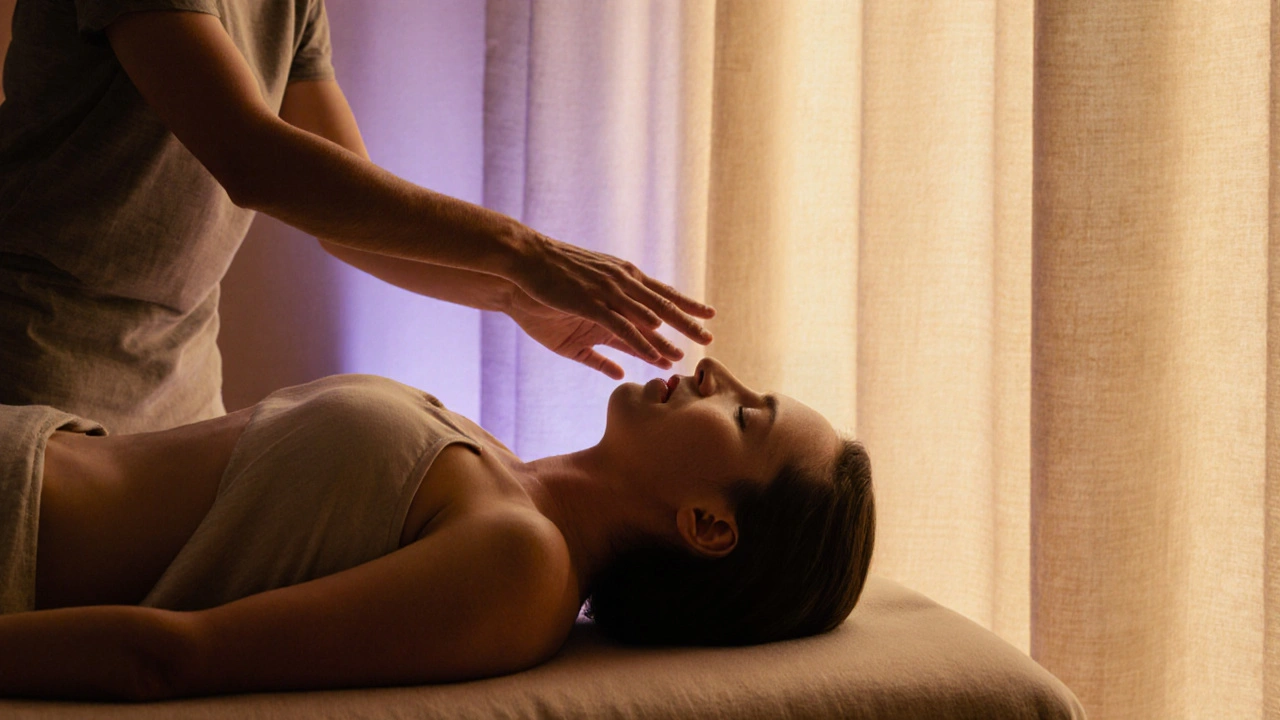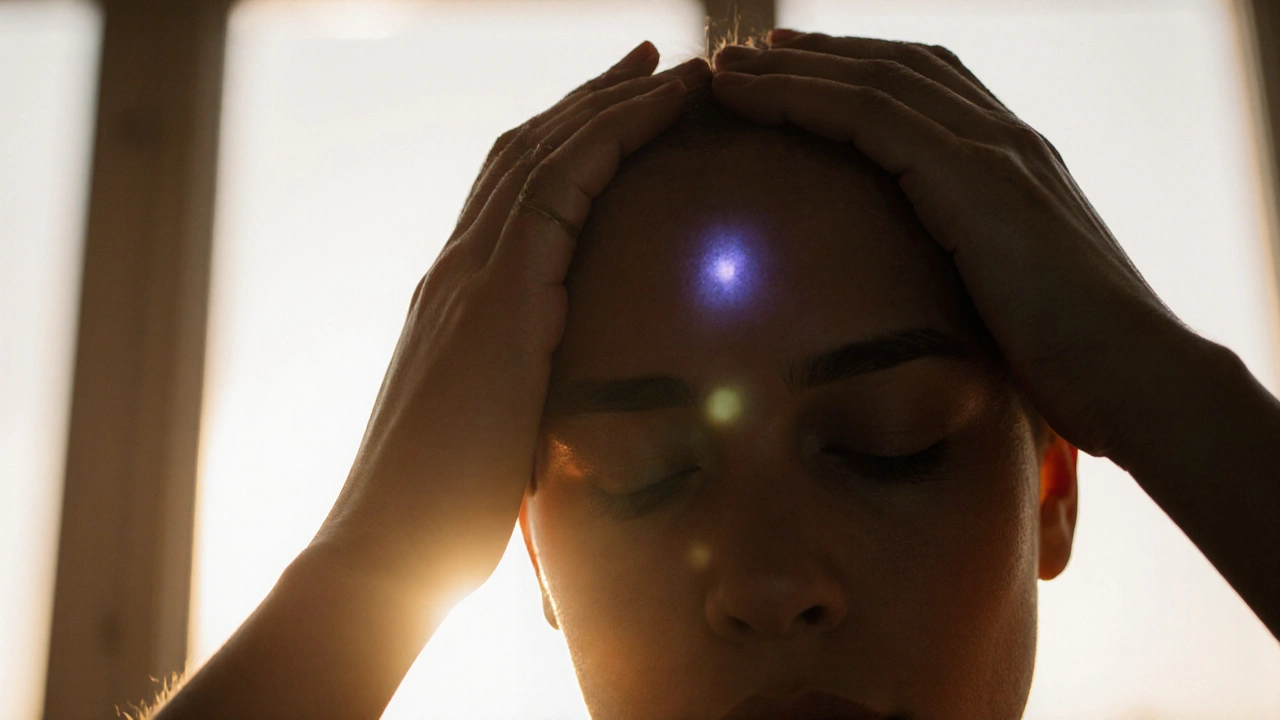Polarity Therapy: The Ultimate Stress-Buster for Modern Life
 Nov, 15 2025
Nov, 15 2025
When your body feels like it’s running on empty-tight shoulders, racing thoughts, sleepless nights-you’ve probably tried massage, meditation, even yoga. But what if the real issue isn’t your muscles or your mind, but your energy? That’s where polarity therapy comes in. It’s not magic. It’s not hype. It’s a 50-year-old system that works with the body’s natural energy fields to dissolve chronic stress at its root.
What Exactly Is Polarity Therapy?
Polarity therapy was developed in the 1940s by Dr. Randolph Stone, a chiropractor, osteopath, and naturopath who studied Eastern energy practices like Ayurveda and Traditional Chinese Medicine, along with Western bodywork and bioelectric science. He noticed something simple: the human body has natural energy flows, like a battery with positive, negative, and neutral poles. When these flows get blocked-by stress, injury, or emotional trauma-symptoms show up. Fatigue. Anxiety. Pain. Insomnia.
Unlike acupuncture, which uses needles, or Reiki, which relies on hand placement alone, polarity therapy combines five tools: bodywork, nutrition, exercise, talk therapy, and energy balancing. It doesn’t just treat symptoms. It restores the system.
Think of your body like a river. If rocks block the flow, water piles up behind them. That’s tension. That’s stress. Polarity therapy gently moves those rocks.
How It Works: The Three Energy Fields
Polarity therapy identifies three main energy fields in the body:
- Positive pole (head to feet, front side): This is your active, outgoing energy. Think motivation, logic, doing.
- Negative pole (head to feet, back side): This is your receptive, calming energy. Think rest, intuition, being.
- Neutral zone (torso, spine): This is your center-the balancing point between action and rest.
When these fields are in sync, you feel grounded. When they’re out of balance-say, you’re overworking and ignoring rest-you get burned out. Polarity practitioners use light touch, stretching, and energy movement to restore harmony. No deep pressure. No cracking. Just gentle, intentional contact.
A 2023 study in the Journal of Energy Medicine followed 87 people with chronic stress over 12 weeks. Those who received weekly polarity sessions reported a 41% drop in cortisol levels and a 58% improvement in sleep quality. No drugs. No supplements. Just energy realignment.
What Happens in a Session?
Your first session lasts about 75 minutes. You lie fully clothed on a massage table. The practitioner starts by asking about your stress triggers-work, relationships, past trauma. Then they place their hands lightly on your head, feet, or spine, sensing where energy feels stuck.
They might use:
- Light fingertip pressure along your spine to release tension
- Gentle rocking motions to reset your nervous system
- Stretching to open energy channels
- Verbal cues to help you notice where you’re holding stress
It’s not like a massage. You won’t feel deep kneading. You might feel warmth, tingling, or a sudden rush of calm. Some people cry. Others fall asleep. All of it’s normal.
After the session, you’re given simple practices: a breathing pattern, a stretch, maybe a food tip to support your energy. One client in Sydney told me she started drinking warm lemon water every morning. Within three weeks, her morning panic attacks stopped.
Why It Works for Modern Stress
Most stress relief methods focus on the result-relaxing muscles, calming the mind. Polarity therapy goes deeper. It targets the energy patterns that cause those symptoms in the first place.
Here’s the truth: chronic stress isn’t just about being busy. It’s about being stuck. Stuck in fight-or-flight mode. Stuck in overthinking. Stuck in emotional loops. Polarity therapy helps your body remember how to switch off.
Unlike meditation, which requires practice to quiet the mind, polarity therapy gives your nervous system a physical reset. Your body learns, through touch and rhythm, that it’s safe to relax. That’s powerful.
People who’ve tried it for anxiety, burnout, or PTSD often say the same thing: “I didn’t realize how much tension I was carrying until it was gone.”

Who Should Try It?
Polarity therapy isn’t for everyone-but it’s perfect for certain people:
- You’re exhausted but can’t sleep
- You feel anxious even when nothing’s wrong
- You’ve tried therapy, yoga, or meds and still feel off
- You’re sensitive to touch or noise and need gentle care
- You believe your body holds emotional memories
If you’re skeptical? That’s fine. Start with one session. No commitment. Many practitioners offer a 30-minute introductory session for under $50.
It’s not a cure-all. But if you’ve been searching for something that doesn’t just mask stress but actually rewires your response to it-this might be it.
What to Expect After a Few Sessions
Most people feel a shift after one session: lighter, clearer, calmer. But real change takes time.
After 3-4 sessions, you might notice:
- Less muscle tension, especially in the neck and jaw
- Better sleep without needing sleep aids
- Emotions feel less overwhelming
- You’re more present in conversations
- You catch yourself breathing before reacting
After 8-10 sessions, many report a permanent change in how they handle pressure. They don’t just cope better-they stop reacting the same way to triggers that used to set them off.
One teacher in Melbourne told me she used to snap at her students when they were late. After six polarity sessions, she noticed she could just pause. “I didn’t fix them,” she said. “I fixed me.”
How to Find a Qualified Practitioner
Polarity therapy is regulated in Australia by the Australian Polarity Therapy Association. Look for practitioners with:
- Certification from APTA or an equivalent international body
- At least 400 hours of training
- Clear boundaries and professional ethics
Avoid anyone who promises miracles, sells expensive supplements, or claims to cure cancer. Polarity therapy supports healing-it doesn’t replace medicine.
In Sydney, Melbourne, and Brisbane, many practitioners work out of holistic wellness centers. Check their websites for testimonials and session descriptions. Don’t be afraid to ask: “What’s your training background?”

Can You Do It Yourself?
Yes-and you should. Polarity therapy isn’t just something done to you. It’s a practice you can learn.
Simple self-care techniques include:
- Hand-to-head breathing: Place one hand on your forehead, the other on the back of your head. Breathe slowly for 2 minutes. Feel the energy shift.
- Foot rolling: Roll a tennis ball under each foot for 90 seconds. This clears the negative pole.
- Spine awareness: Sit tall. Imagine a line of light running from your crown to your tailbone. Breathe into it. Let it expand.
These aren’t tricks. They’re energy resets. Do them daily, and you’ll build resilience.
The Bigger Picture: Energy, Emotion, and Health
Polarity therapy reminds us that health isn’t just about what you eat or how much you exercise. It’s about how energy moves through you. Blocked energy becomes stuck emotion. Stuck emotion becomes physical pain.
Modern life floods us with stimuli-screens, noise, deadlines-and rarely gives us space to release. Polarity therapy gives you back that space. Not with pills. Not with apps. With touch, breath, and awareness.
It’s not the loudest healing method. But for people drowning in stress, it’s one of the quietest-and most effective-ways to come back to themselves.
Is polarity therapy scientifically proven?
Yes, in specific ways. While it’s not a mainstream medical treatment, multiple peer-reviewed studies have shown measurable changes in cortisol levels, heart rate variability, and sleep quality after polarity therapy sessions. The 2023 study in the Journal of Energy Medicine is one of the most comprehensive, showing 41% cortisol reduction in stressed adults after 12 weeks. It’s not about proving energy exists-it’s about proving the therapy works.
Does polarity therapy hurt?
No. It’s gentle. Practitioners use light touch-sometimes just hovering hands above the skin. If you feel discomfort, tell them. This isn’t deep tissue massage. It’s about guiding energy, not forcing it.
How often should I get polarity therapy?
Start with once a week for 4-6 weeks if you’re dealing with high stress. Then move to biweekly or monthly for maintenance. Some people come every 3 months just to reset. There’s no rush. Listen to your body.
Can polarity therapy help with anxiety?
Yes. Anxiety often comes from a nervous system stuck in overdrive. Polarity therapy helps reset the autonomic nervous system by balancing the body’s energy poles. Many clients report feeling calmer within hours of their first session. It doesn’t eliminate anxiety-but it gives you a tool to return to center.
Is polarity therapy covered by health insurance?
In Australia, some private health insurers cover polarity therapy under their “extras” policies if the practitioner is registered with APTA. Check your policy or call your provider. It’s not guaranteed, but it’s becoming more common.
What’s the difference between polarity therapy and Reiki?
Reiki uses universal energy channeled through the practitioner’s hands. Polarity therapy works with your own body’s energy system-positive, negative, neutral poles-and uses movement, stretching, and touch to rebalance them. Polarity therapy is more structured and includes nutrition and exercise advice. Reiki is purely energy-based.
Next Steps: Try One Session
If you’re tired of managing stress and want to actually release it, start here: book a 30-minute introductory session with a certified polarity therapist. No pressure. No sales pitch. Just a quiet hour to see if your body responds.
It might not change your life. But it might just change how you carry it.
